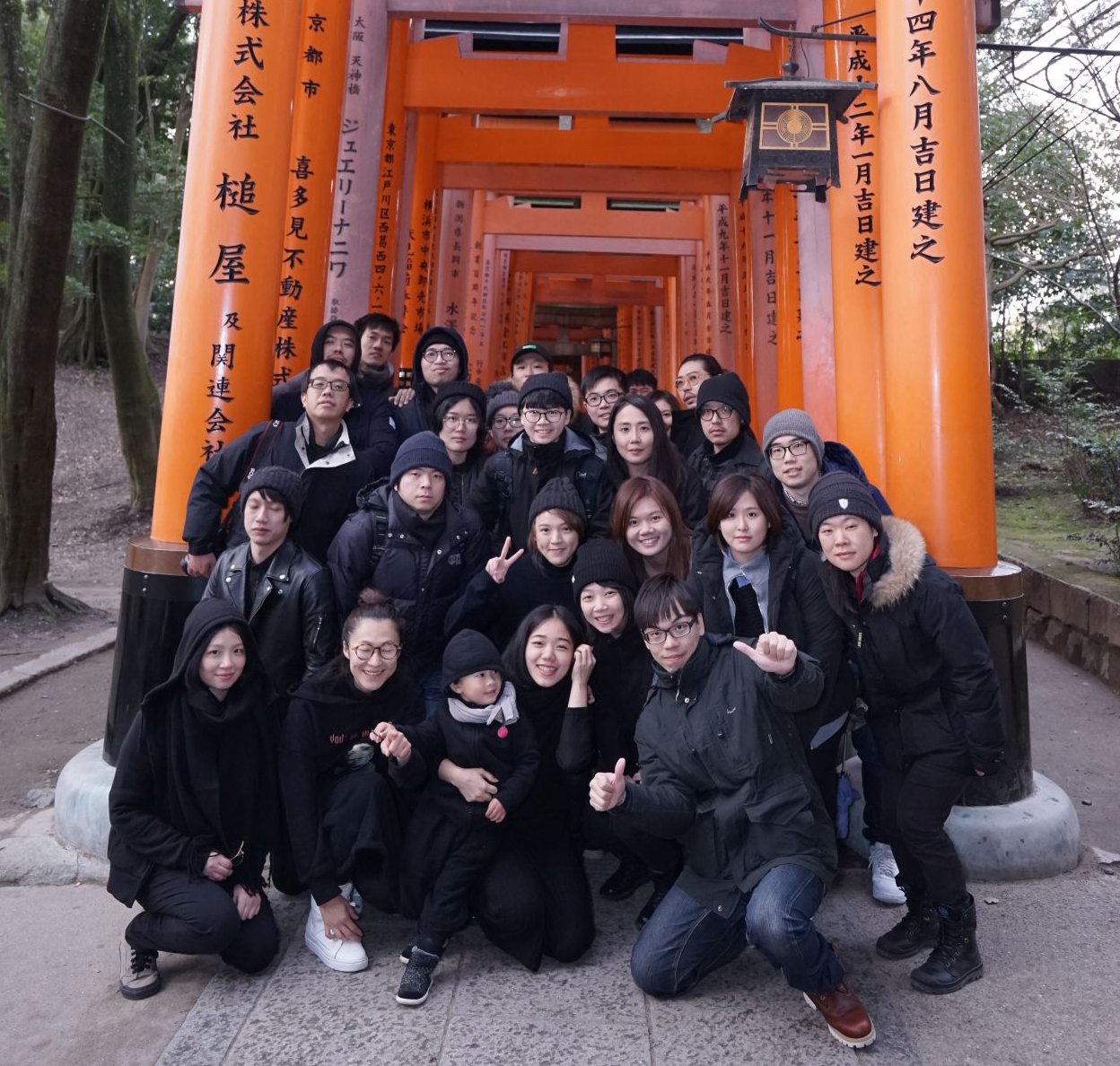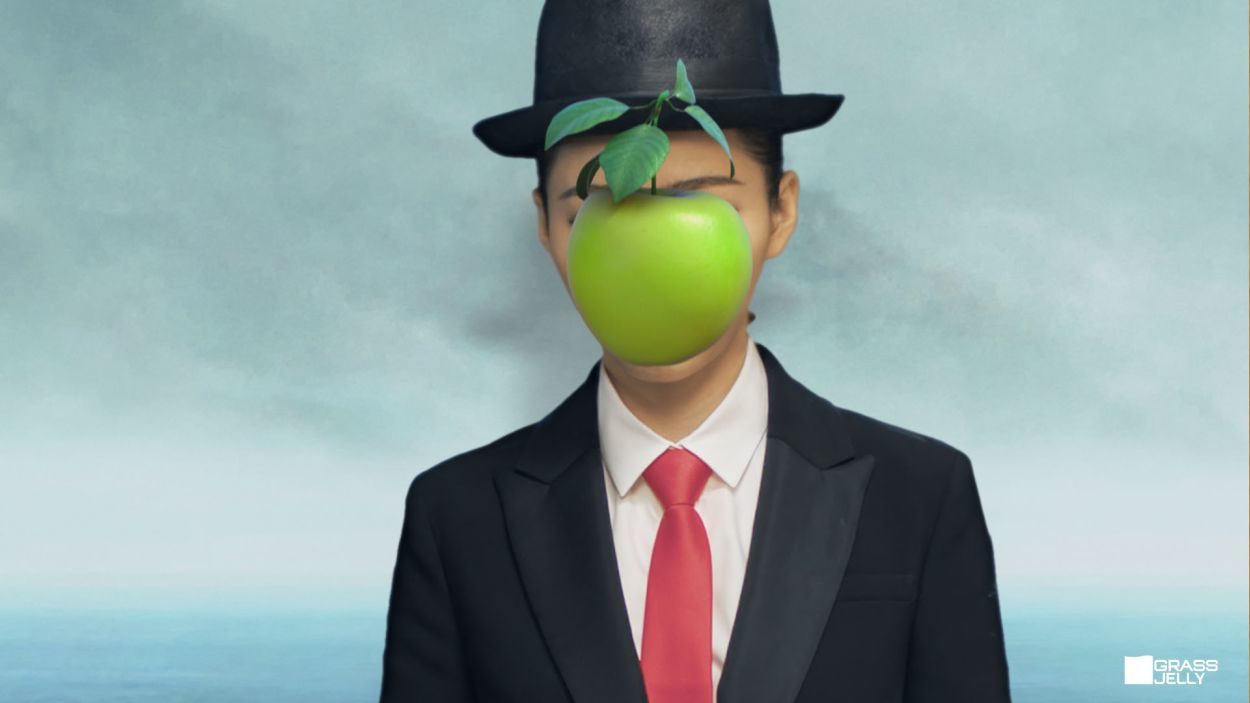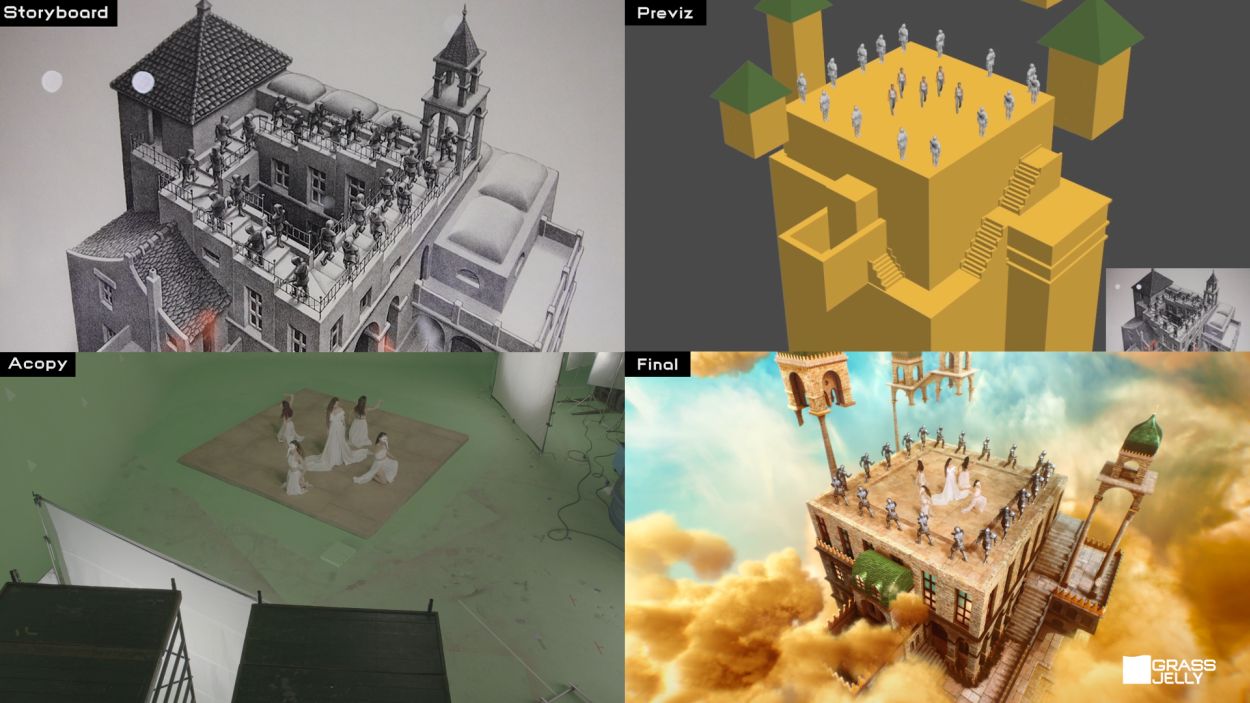Best Motion Design 2017: „Dust my Shoulders off“
For “Dust My Shoulders off”, the English-language debut of Asian singer Jane Zhang, Grass Jelly studio used a colourful mix of CG techniques to create a highly original music video that breathes vibrant new life into famous works of art.
The project was a risky venture that called for a tremendous level of talent and perseverance from the entire CG team; one wrong move and the video might not be as fluid and convincing as it needed to be. However, thanks to the team’s high-quality work on all levels, “Dust My Shoulders Off” achieved something spectacular and earned the animago in the category “Best Motion Design”.
The idea for the video came from director Jen-Shuai Liao. The team at Grass Jelly built a total of 12 backdrops based on famous works of art and then added a number of humorous objects and creative ideas. The animago jury was particularly impressed by the clever and seamless transitions between scenes, which represent a true tour de force.
Getting Started in the Museum
Director and Grass Jelly founder Muh Chen worked as VFX and animation supervisor on the project. He came up with the idea for the introductory shot from a first-person perspective, whereby the viewer enters the museum and leafs through an exhibition flyer.
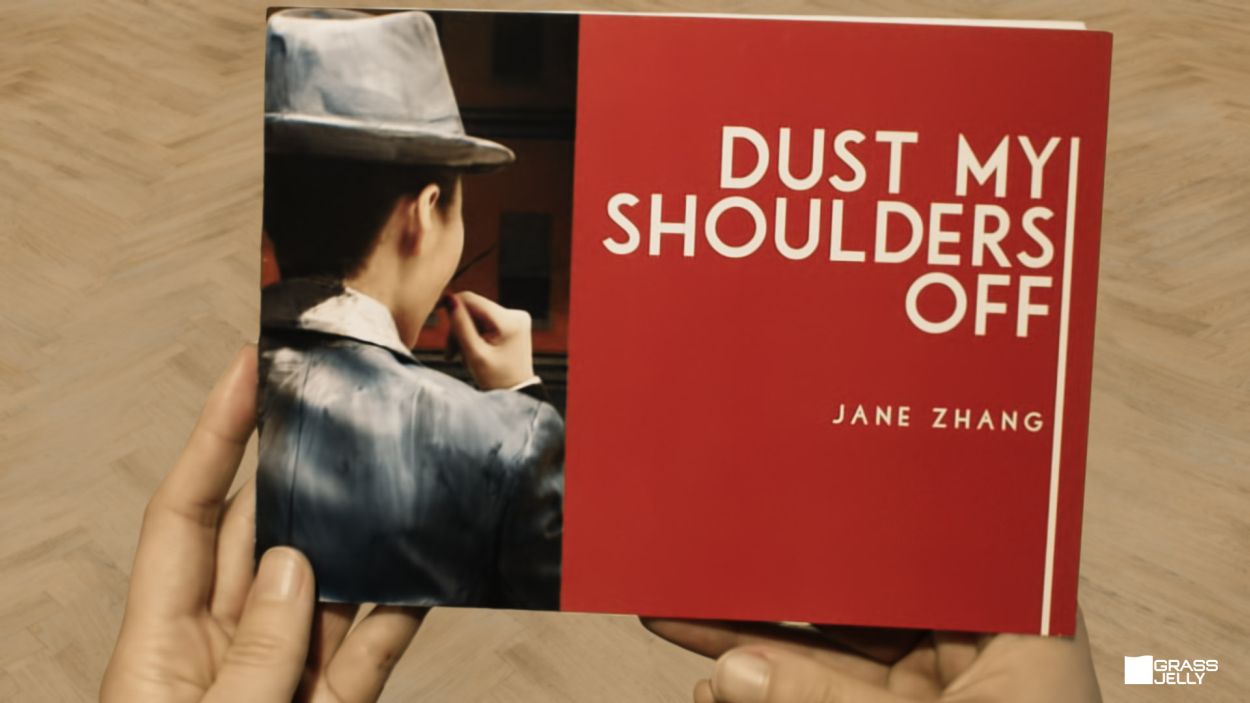
In order to shoot the original plate, the team attached a Blackmagic Pocket Camera to the actress’ shoulder. Then, to generate the necessary stability, she just pretended to walk. In post-production, the plate was placed in front of the 3D camera, and after that, the camera movement and CG floor were created. For the next shot, in which the museum visitor looks up from the guide, the artists used Camera Mapping to project the Art Institute of Chicago plate as a texture onto the 3D model. In the last step, they combined the CG floor and the original plates to form a harmonious whole.
Team, References & Shoot
A total of 15 people at Grass Jelly Studio worked on the music video within a very tight timeframe: the pre-production process lasted one month and the on-site production process had to be completed in three months. Among the programs in their pipeline were Maya, 3ds Max, After Effects and Nuke.
As to be expected, the original art “masterpieces” provided the team’s first references, and they studied these images extensively online. Each work of art has widely different colours and brush strokes, which made the project even more complex. In order to find camera movements analogous to the planned sequence, the team looked for long-take examples from the past. They worked out the previz – including storyboard and shot list – very precisely beforehand; this was important given that the shoot had to follow it exactly. Roughly 50 people worked on-set, and filming was done in an ArriRaw format with an Alexa Mini. While the filming was taking place, the art designers and 3D animators modelled and tested the effects using the style frames.
Work-of-Art Challenges
It was a major challenge to shoot the opening and ending sequences of Hopper’s “Nighthawks” painting, because the narrative called for a very soft and simultaneously flexible camera movement. In spite of all the efforts they made on set, the team still had to use a number of stabilization and time remapping techniques in post-production to prepare the material as effectively as possible.

For the shoot of Maurits Cornelis Escher’s lithography “Ascending and Descending”, the camera angle for the original plate had to exactly match that of the 3D castle environment. The artists spent lots of time calculating the camera angle and height in the 3D software so that the optical illusion would work afterwards. During the shoot itself, these numbers were crucial to achieving the optimal fusion of plate and 3D scene.
In the pre-viz before the shoot, the team fixed the camera moving path in Salvador Dali’s “The Temptation of St. Anthony” very precisely; however, in spite of their meticulous preparation, they faced several unexpected problems on set. For example, the range of movement of the telescopic camera crane was not as flexible as expected, plus they had to synchronize the singer’s movements with the camera movements. In the end, the team had to make several attempts before the plate could be shot properly.
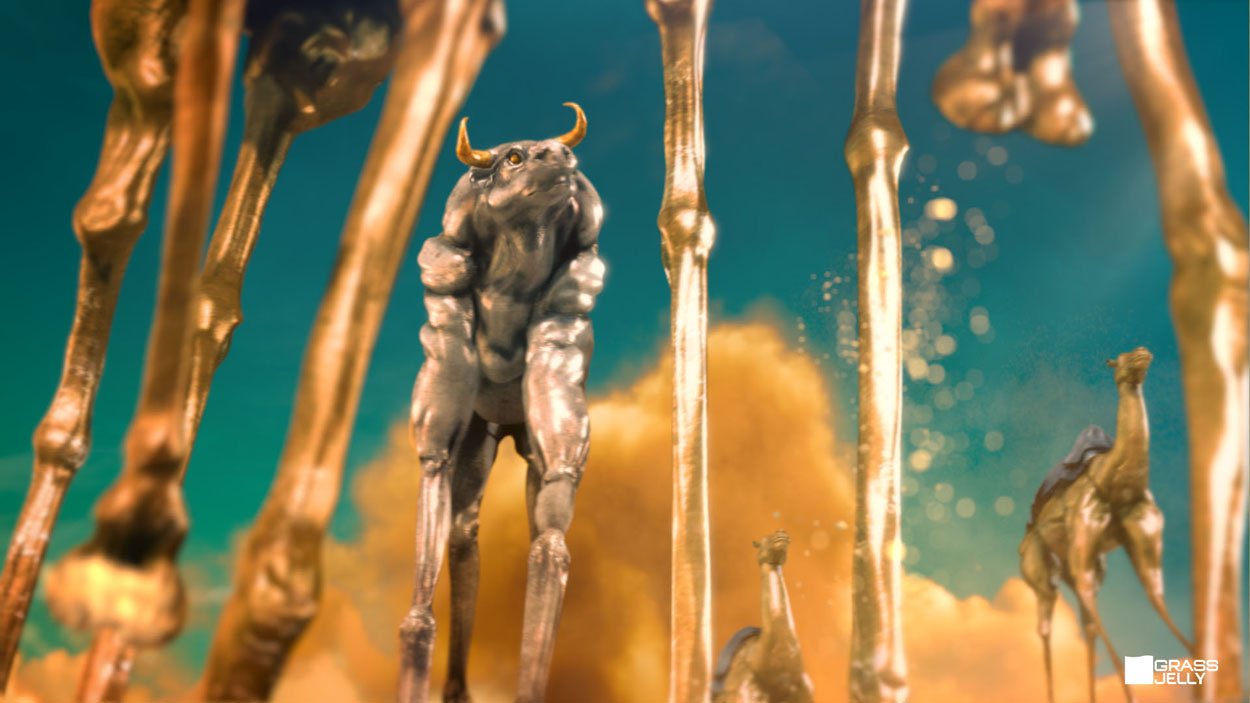
Creating Seamless Transitions
In the post-production process, the team had to make sure the actors’ body paint matched exactly the colours in the original paintings, sometimes even blending completely with the 3D strokes. The brush strokes in Edvard Munch’s “The Scream” are strong and energetic, which presented the animators, in particular, with the complex task of creating a vibrant background design. They solved this challenge by using particles and distortions to simulate the strokes. To generate the seamless connection of the real plates and the CG scenes, the team first adjusted the speed then sought out similar elements in the backgrounds in terms of form and colour, thus generating perspectivistic compositions.
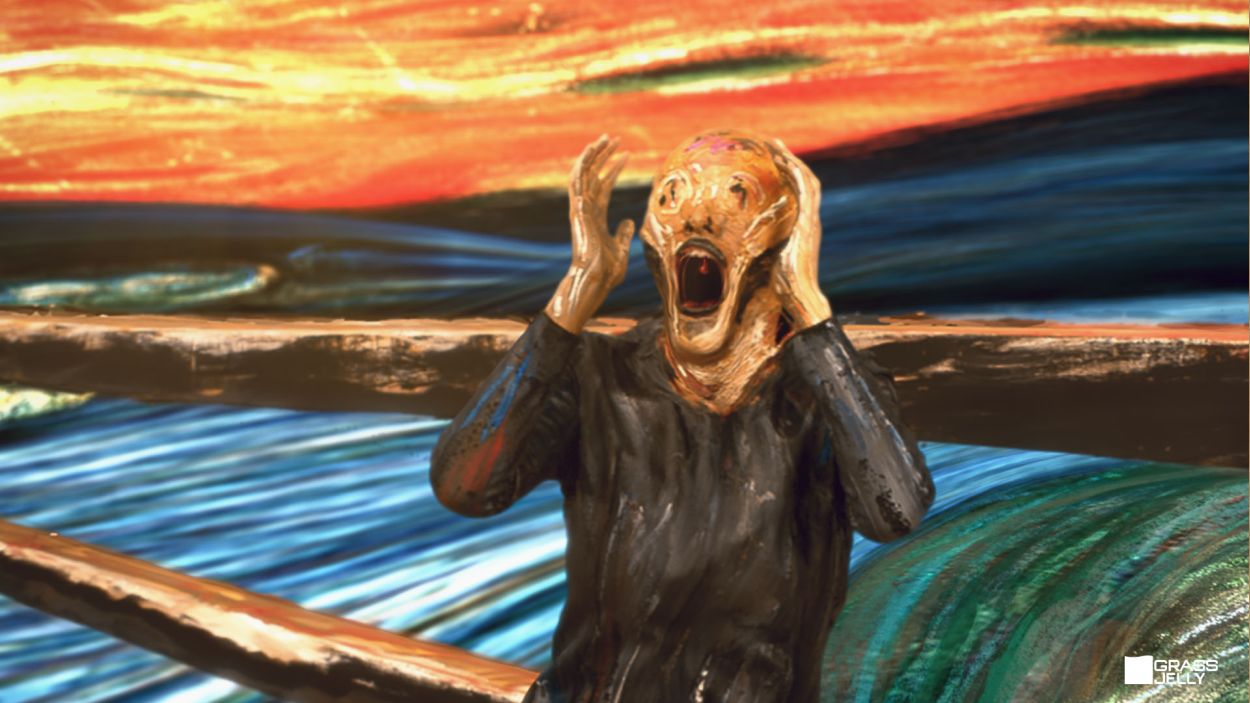
The team worked on Vincent van Gogh’s self-portrait very last because it took a while to achieve the optimal tone and style linking the character and background of the painting. The artists came to the conclusion that the scene looked more natural when they put the real body colour into the painting scene. They integrated it into the 3D strokes, whereby they tried to get as close as possible to the composition of the real painting, which involved a long process of transforming the individual elements. After that, they added suitable movements, and then the 3D graphic footage was placed in the background.
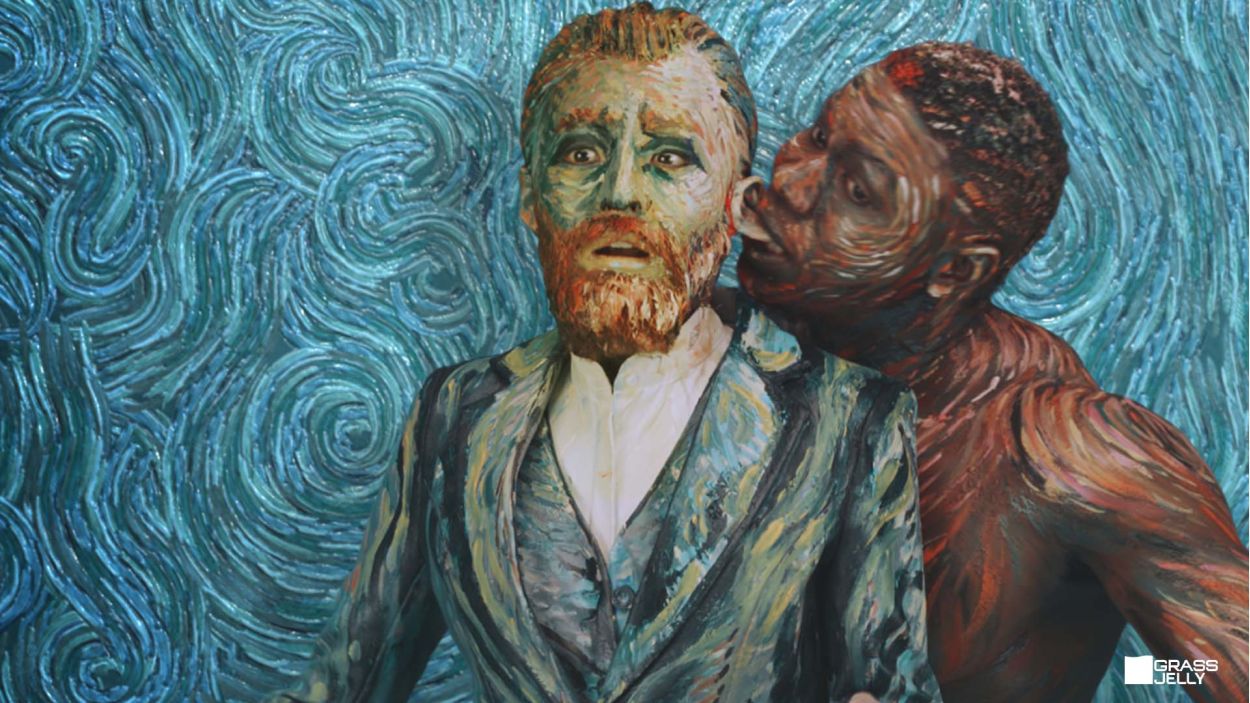
“Dust My Shoulders off” was the first project of its kind for Grass Jelly. The team certainly took on a major challenge in creating it, but their efforts completely paid off, giving the artists – and the entire company – a completely new platform to try new things and prove their talent.
About Grass Jelly
Grass Jelly was founded in Taipei, Taiwan in 2005. In the past decade, the team has devoted itself to creating breathtaking visual artworks by combining traditional film art with digital technology across many platforms. Grass Jelly’s customers include Pepsi, Nike, Puma and Heineken, and the team has already won several international awards for its work.
